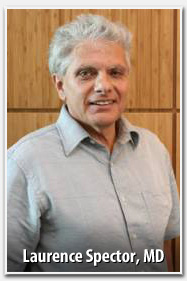
The influx of information technology and mobile devices in the healthcare setting have transformed the way providers practice medicine. Despite the many benefits of technology, there are some downsides to the addition of these new key players in the exam room—the laptop, tablet, or keyboard.
Particularly in the ED, physicians spend a large amount of our time on the electronic medical record (EMR), taking the focus away from the actual patient. This is not just perception; a recent study conducted at St. Luke's University Health Network in Allentown, Pennsylvania showed ER docs spend nearly half their time entering data into an EMR. The lead physician researcher of the study, Robert G. Hill Jr, MD, and his colleagues analyzed how time was utilized in their community hospital ED. They found that physicians spent 43% of their time performing data entry, roughly twice as much as their time spent on direct patient care.
In addition to the EMR, physicians in the ER are constantly being interrupted by all sorts of calls and tasks by virtue of the fact that we are taking care of multiple patients with various different problems at the same time. What does this mean for patient safety, or even the delicate patient-doctor relationship?
Introducing a computer device into the mix and having to input data can be yet another distraction for the physician—giving us less time to think about the patient’s problem, creating a complete differential diagnosis, and seeing the big picture. This can result in errors of omission, despite the use of chief complaint/problem-oriented order sets and embedded clinical decision support that may be present in the EMR to possibly prevent that very thing from happening! We need time to process, and it has been shown that all this time at the keyboard and mouse may be decreasing that time.
In addition, the patient’s perception of their clinician always at the keyboard and looking at a computer screen doesn't leave the best impression about our bedside manner.
There is no easy solution to these concerns. MEDITECH is aware of the obstacles electronic devices can pose in a patient encounter, and we have a growing physician consultant base that works alongside the Development and Implementation teams to ensure our software isn’t further impeding the workflow.
Some of the change needed to combat this trend, however, does need to come from the provider. When you’re meeting with a patient, try to be aware of your “technology manners,” and analyze how much you are engaging in meaningful interaction with the patient as opposed to just interacting with your computer. Here are some great tips for focusing on the patient, not the device, when providing patient care.